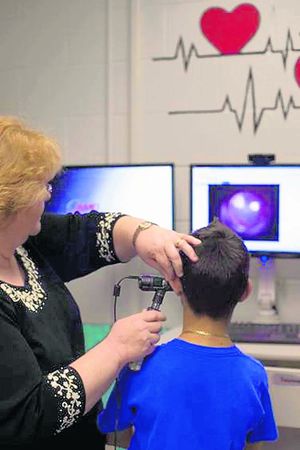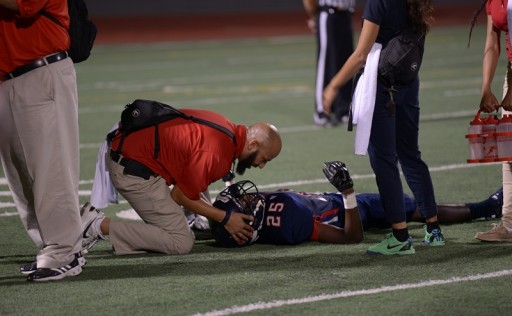
Christy Lewis Photography in Marion
Telehealth is rapidly proving its worth as way of broadening access to healthcare. Now, an innovative coalition of medical providers, technology companies and the National Federation of State High School Associations (NFHS) is using telemedicine to test a new way of caring for Mississippi football players who experience concussive injuries: providing telehealth concussion evaluations right on the game field.
Telehealth concussion evaluations to help high school football players
University of Mississippi Medical Center (UMMC) will lead the study, using technology from Dell and VSee to determine the usefulness of providing on-the-spot concussion evaluations for high school football players who are injured on the playing field. The study looks at the use of video conferencing to provide concussion evaluation by physicians for football players at 10 to 20 high schools in Mississippi during the 2015 football season. These sites will cover urban, suburban and rural locations to ensure a diverse sample during the pilot project. The pilot will begin on August 21, 2015, and the technology will be available to the selected schools through the duration of their seasons.
In partnership with VSee, Dell will offer a low cost, HIPAA-compliant, video telemedicine platform with VSee software, which can connect remote physicians with patients anywhere in the world via the Internet. In this study, the system will connect a remote physician with an athlete on the field for the concussion consult. Dell will provide Windows tablets with built-in high-definition cameras, to facilitate the video consult.
At the end of the football season, UMMC’s Center for Telehealth will provide metrics to the NFHS to show how often the system was used and to measure the effectiveness of on-field telehealth concussion evaluations by a physician. The NFHS is interested in scaling and replicating this program broadly, so a thorough evaluation of the program will help the group determine if this technology can improve the way coaches and other athletic officials respond to concussive injuries. Results from the study are expected to be available during the first half of 2016.
Head injury is common among high school football players

Renee Fernandes/NATA
Aaron Ellis, MEd, ATC, LAT, the athletic trainer at Kimball High School in Dallas, TX helps kids on the field and on the sidelines during the football team’s opening game.
The NFHS study will address a serious issue in high school football. According to the American Association of Neurological Surgeons, “more than 300,000 sports-related concussions occur annually in the U.S., and the likelihood of suffering a concussion while playing a contact sport is estimated to be as high as 19 percent per year of play. More than 62,000 concussions are sustained each year in high school contact sports, and among college football players, 34 percent have had one concussion, and 20 percent have endured multiple concussions.”
A rare but often fatal condition, second impact syndrome, can occur when an athlete suffers a second concussion before fully healing from a previous concussion. This is why immediate evaluation is so important. If a concussion diagnosis is missed, and the athlete continues to play, a second concussion could prove catastrophic.
If the study shows better outcomes for injured student athletes who receive immediate evaluation, the technology may see widespread use in other sports venues. Many schools currently rely on local volunteer physicians for on-the-field care, which is a less-than-ideal situation because volunteers may not always be available when needed, or they might lack the needed expertise in concussion evaluation. This is especially true in small towns with limited medical resources.
For volunteer physicians who are willing to be at the game but don’t have expertise in sports-related injuries, the ability to consult, on the spot, with a knowledgeable colleague, would no doubt be welcome. And for coaches who have no physician on the field, a virtual consult via telehealth technology could lead to better decisions about when to let a student play and when to keep the athlete off the field. And while concussions are the number one concern, telehealth consults could be used to evaluate a wide variety of other common injuries, including heat stroke, which has also claimed the lives of young athletes.
Original post on Dell Blog here, by Fadesola Adetosoye – Telehealth & Telemedicine Practice Lead, Dell Healthcare & Life Sciences




Completely agree that telemedicine in concussion management works. Sway is doing exactly that today through their platform. ask Dr Javier Cardenas, Barrow Neuro Inst and NFL Head Neck & Spine Commitee as he is a pioneer. The key important issue is the ability for CMS to approve a telemedicine code to get the physicians paid for their services. That will be your challenge. That, and delivering objective data during the exam….its a patent minefield but it’s already understood this is real, it works and available commercially today via Sway.